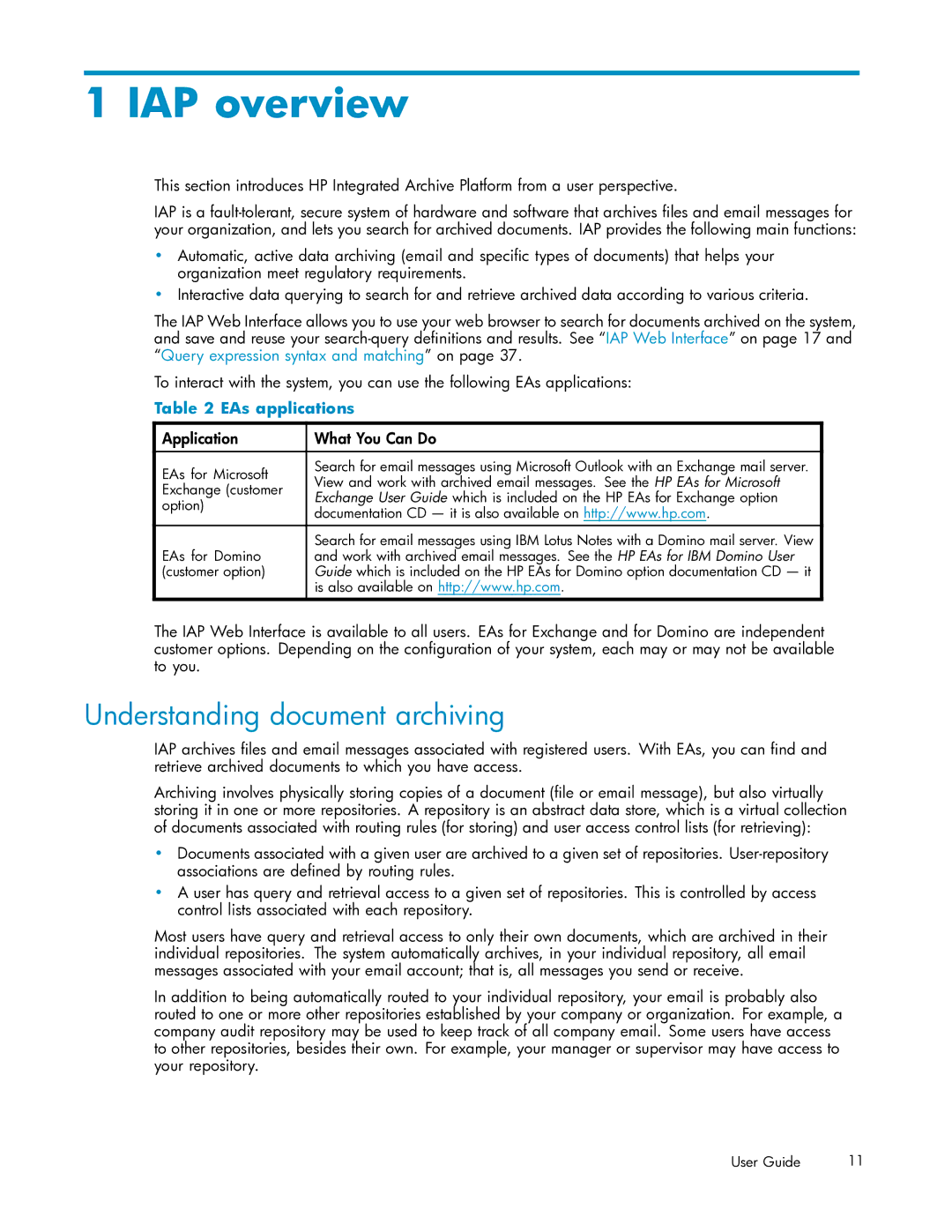1 IAP overview
This section introduces HP Integrated Archive Platform from a user perspective.
IAP is a
•Automatic, active data archiving (email and specific types of documents) that helps your organization meet regulatory requirements.
•Interactive data querying to search for and retrieve archived data according to various criteria.
The IAP Web Interface allows you to use your web browser to search for documents archived on the system, and save and reuse your
To interact with the system, you can use the following EAs applications:
Table 2 EAs applications
Application | What You Can Do | |
|
| |
EAs for Microsoft | Search for email messages using Microsoft Outlook with an Exchange mail server. | |
View and work with archived email messages. See the HP EAs for Microsoft | ||
Exchange (customer | ||
Exchange User Guide which is included on the HP EAs for Exchange option | ||
option) | ||
documentation CD — it is also available on http://www.hp.com. | ||
| ||
|
| |
| Search for email messages using IBM Lotus Notes with a Domino mail server. View | |
EAs for Domino | and work with archived email messages. See the HP EAs for IBM Domino User | |
(customer option) | Guide which is included on the HP EAs for Domino option documentation CD — it | |
| is also available on http://www.hp.com. |
The IAP Web Interface is available to all users. EAs for Exchange and for Domino are independent customer options. Depending on the configuration of your system, each may or may not be available to you.
Understanding document archiving
IAP archives files and email messages associated with registered users. With EAs, you can find and retrieve archived documents to which you have access.
Archiving involves physically storing copies of a document (file or email message), but also virtually storing it in one or more repositories. A repository is an abstract data store, which is a virtual collection of documents associated with routing rules (for storing) and user access control lists (for retrieving):
•Documents associated with a given user are archived to a given set of repositories.
•A user has query and retrieval access to a given set of repositories. This is controlled by access control lists associated with each repository.
Most users have query and retrieval access to only their own documents, which are archived in their individual repositories. The system automatically archives, in your individual repository, all email messages associated with your email account; that is, all messages you send or receive.
In addition to being automatically routed to your individual repository, your email is probably also routed to one or more other repositories established by your company or organization. For example, a company audit repository may be used to keep track of all company email. Some users have access to other repositories, besides their own. For example, your manager or supervisor may have access to your repository.
User Guide | 11 |
